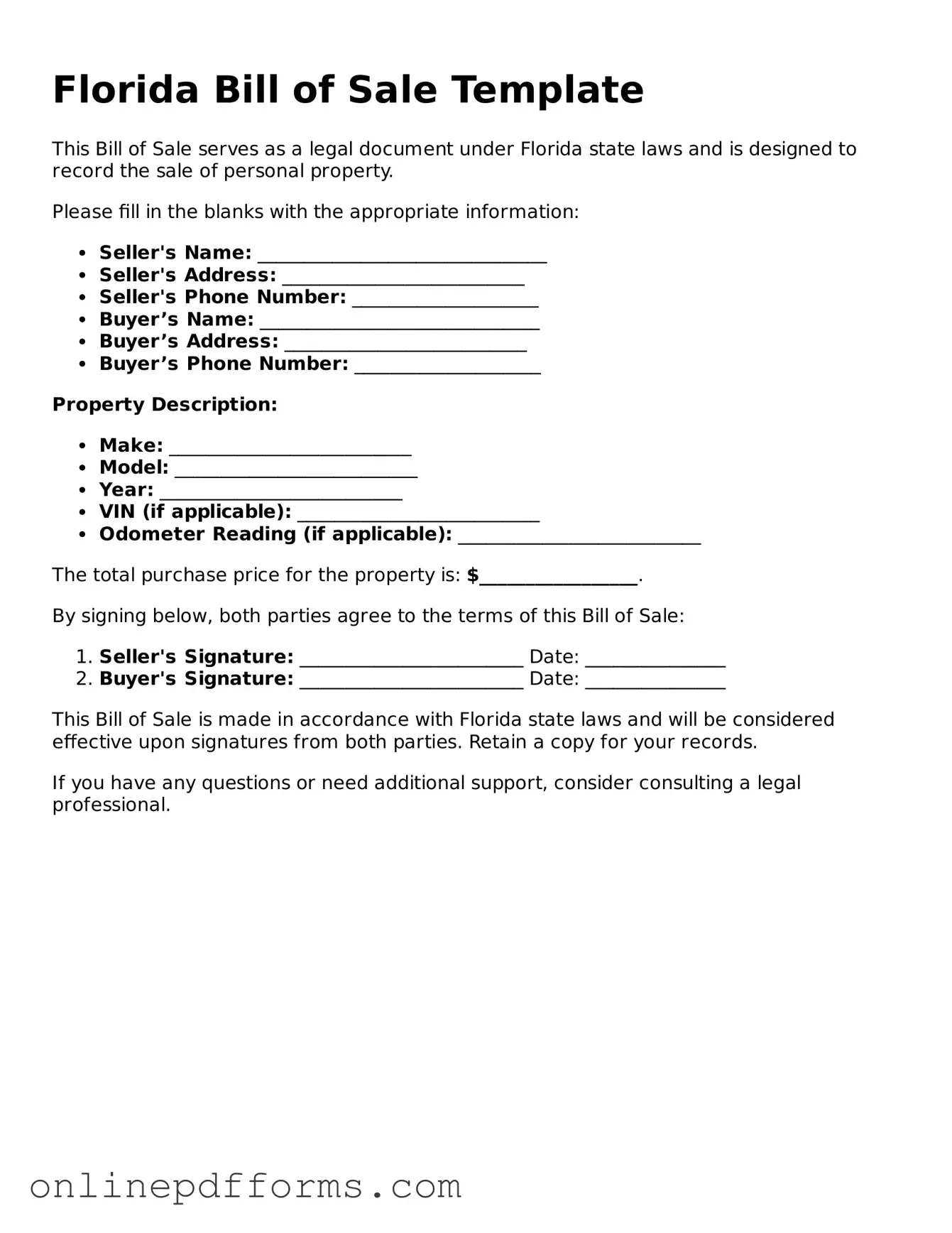The Florida Bill of Sale is similar to a Vehicle Title Transfer form. Both documents serve to transfer ownership of a vehicle from one party to another. The Vehicle Title Transfer form is typically required by the state to officially record the change of ownership. This ensures that the new owner is recognized and can register the vehicle under their name, providing legal proof of ownership just like the Bill of Sale does.
Another document akin to the Bill of Sale is the Purchase Agreement. This agreement outlines the terms of the sale, including the purchase price and any conditions that must be met. While the Bill of Sale serves as proof of the transaction, the Purchase Agreement provides a more detailed account of the terms agreed upon by both parties. It helps clarify expectations and can serve as a reference if disputes arise later.
The Warranty Deed is also comparable to the Bill of Sale, particularly in real estate transactions. A Warranty Deed transfers ownership of property and guarantees that the seller holds clear title to it. Like the Bill of Sale, it provides legal proof of ownership, ensuring that the buyer receives the property free of claims or liens. Both documents are crucial in establishing legal ownership and protecting the rights of the new owner.
The Lease Agreement shares similarities with the Bill of Sale, especially in the context of renting personal property. A Lease Agreement outlines the terms under which one party can use another's property, such as equipment or vehicles. While the Bill of Sale transfers ownership, the Lease Agreement establishes a temporary arrangement, detailing responsibilities and rights during the lease period.
In the realm of personal property, the Gift Deed can be compared to the Bill of Sale. A Gift Deed transfers ownership of property without any exchange of money, similar to how a Bill of Sale documents a sale. Both documents serve as proof of transfer, but the Gift Deed emphasizes the voluntary nature of the transfer without consideration, while the Bill of Sale involves a transaction.
The Affidavit of Heirship is another document that bears resemblance to the Bill of Sale, particularly in estate matters. This affidavit is used to establish the rightful heirs to property when someone passes away without a will. Like the Bill of Sale, it serves to clarify ownership and can facilitate the transfer of assets to heirs, ensuring that the property is passed on legally and correctly.
Finally, the Release of Liability form is similar in that it can accompany the Bill of Sale when transferring ownership of certain items, like vehicles or boats. This form protects the seller from future claims or liabilities associated with the item after the sale. While the Bill of Sale confirms the transaction, the Release of Liability ensures that the seller is no longer responsible for the item, providing peace of mind for both parties involved.
